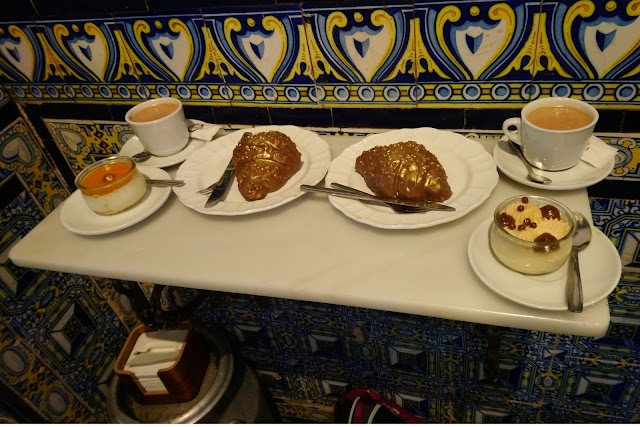 |
| The Catedral de Sevilla's Giralda is Seville's most easily recognized landmark |
Cycling in Seville
What makes Seville’s bikeway network stand out is their 80 kilometre core network was built within 18 months and we’re not talking slapping some paint on the road! Seville’s bikeways – existing on most arterials outside of downtown – is as close to best practice as it gets with raised cycle tracks as well as the use of barrier curbs or closely spaced bollards for protection.
 |
| Seville's bike paths are well designed at intersections |
 |
| The protected bike lanes extend beyond Seville into this suburban town of Camas |
The protected bike lanes continue outside of Seville, though discovering the full extent would have to wait another time. One gesture I appreciated is the use of wheelchair symbols for accessibility, as well as others to identify conflict zones (exclamation marks), turns, traffic signals, and when to slow down.
 |
| Downtown streets are slowed to 20 km/h with pedestrian and cyclist priority |
 |
| Seville's bike share is a good size but needs a one day (or one ride) option |
Sightseeing
 |
| The high altar inside the Catedral de Sevilla shows the different scenes in Jesus' life |
 |
| View of Seville from the Giralda |
 |
| We frequently passed by the Metropol Parasol during our stay in Seville |
 |
| At least an hour is needed to thoroughly enjoy Plaza de España |
 |
| There is a bit of an Islamic vibe inside the Real Alcazar |
 |
| The gardens at Real Alcazar along with some red and yellow painted buildings |
 |
| Seville's bull fighting ring (Plaza de Toros) |
No blog post on Seville can be complete without talking about their food! One popular breakfast (or snack) is churros con chocolate which costs two to three Euros. The Cafeteria La Reunion Desayunos Y Meriendas gives you five large churro pastry sticks, while their hot chocolate is so rich you can dunk the churros in them. North American hot chocolate doesn’t even come close.
 |
| Tapas at La Brunilda - The grilled foie and pears in red wine is at the bottom |
 |
| Gold croissants, pudding, and hot chocolate at Dulceria Manu Jara |
Final Thoughts
 |
| Seville is a very relaxing place overall |
Adios!
Rob Z (e-mail)
No comments:
Post a Comment